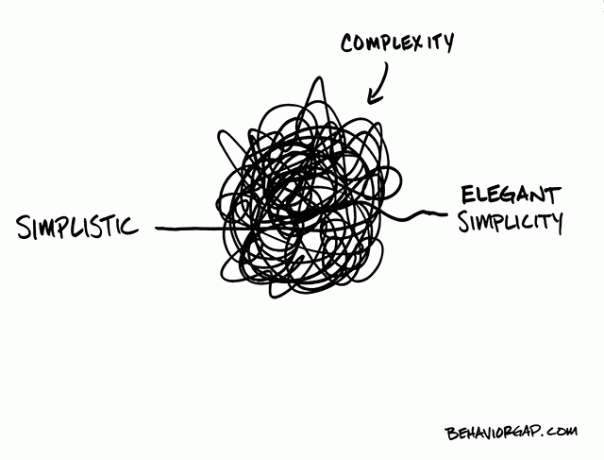
#OpenLeadership is simple. It is a practice of embracing change as constant, encouraging individual thought, relying on intuition more than data, fluidity more than hierarchy, trust more than fear, and putting the common good ahead of profit.
What does it mean to be this type of leader? Such leaders have core qualities that drive them. Those are to: Be Brave, Be Hungry, Be Open, Be Humble.
Simple definition from the #OpenLeadership page on this site
Keeping it simple is powerful, yet only if you’ve done the work before you simplify, or have someone you trust to do it for you!
As an example, the other night I was out for dinner with a dear friend, one of the most highly educated and brilliant people I know. They talked through an initiative they are co-leading that can (and, I believe will) drive massive change in business to greatly enhance the lives and careers of millions of women.
Having absorbed their ideas delivered at firehose volume and pace, the next morning I woke up simply reflecting on the brilliance that, at the end of the day, what will engage those with and in power to act on their idea is one story that leads to taking three simple actions. That is all.
So, what do I mean by doing the work first?
“I don’t have time to read it, what does it say?”
“Simplicity on the other side of complexity” (one of my favourite short posts on this site!), powerful as it is an idea, does mean that you have first done the research and the work and, only then, distilled to simplicity.
As today’s example with the definition above, #OpenLeadership itself is a simple concept, yet owes much to so many I have learned from over a more than three decades-long career.
One reason I love to take time to read and listen deeply and then distil is that clients expect it of me. A typical client is a senior leader able to absorb detail and contextualise to ideas very easily, yet they are almost always time and focus impoverished.
In the past, as I listened to their issues, concerns, points of focus when we met, I’d often then say “I recommend you read x book”, to which their response would often be “Tom, I’d love to, but I’ll never find the time. What does it say?”.
This was one of the catalysts for me to start writing daily years ago. Over time this has not only allowed me to share what I learn in small chunks each day, but also it has seen ideas evolve such as #OpenLeadership and related themes (see indepth reads on that Open Leadership page.)
An example of doing the work first
As a great example of looking to find simplicity on the other side of complexity, this week I read “Welcome to the Decade Ahead: Prescient Practicality for 2020 and beyond” by Giles Hutchins, a long and in-depth article on (among other things) the book Regenerative Leadership, quoting numerous other thinkers and authors whose work I have followed closely (including Laloux, author of the seminal “Reinventing Organisations“.
The article itself is in great depth and full of deep ideas. Added to that, there is literally tens or even hundreds of hours of reading to be done in books, articles, papers, ideas linked out from the article Giles has written.
I’ll put this time in, and, after marinading on it, at some point this will pop out into a simplified post on this site with a few crisp ideas for leaders to absorb and then look to apply for themselves.
You can connect the dots yourself, but…
This daily blog then, with (typically) short reads each day, is now well over 400,000 words in total, but I do try to break it into “bite-sized” and easily digestible daily reads. It is all, in different ways, around the theme of #OpenLeadership, so a digest building of resource and ideas.
Each time I write, I picture an audience of brave and transformative leaders, hoping that my writing helps them connect the dots for themselves and their work, their organisation, the people they impact.
Now, in working with brave and transformative leaders as my clients, I always listen deeply to them and whatever they are focussed on, then often have some idea that I can “connect the dots” to that they can use to inform their own thinking and decision making.
Of course, I also recommend all leaders have a coach or sounding board to listen, to reflect back, to help them see what they may not see, including how ideas may connect to them. Such connecting of dots is far quicker and easier with someone who does this as their career, their vocation, their passion right at your side, listening intently and with open curiosity to your thoughts, ideas, points of focus.
You never know, someone like that may also see something you don’t see. After all, you can’t see the goldfish bowl you are swimming in (see this post for a brilliant talk around this topic by the late David Foster Wallace)
If that sounds like you, do connect with me, always love to meet in person or on video.
Let’s talk
Book your 30-minute meeting here.
